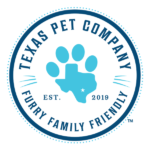Beagle Skin health
Beagles are happy, energetic, compassionate and loving dogs and most families would love to have a beagle as a pet. And like other dog breeds, beagles also have health problems-they are predisposed to certain diseases. One of the health issues of beagles is that they are prone to skin infections/problems.
What are the common skin diseases of beagles?
As with other dog breeds, skin problems in beagles can be caused by numerous agents including infectious agents (bacteria, virus, fungi, parasites), external irritants, allergens and trauma (burns, radiation).
Bacterial dermatitis (pyoderma)
Bacteria that can cause skin infections include Staphylococcus intermedius (most common causative agent), normal resident bacteria of the skin (Staphylococcus sp., Streptococcus sp.), Pseudomonas sp., and E.coli.
Areas such as lip folds, facial folds, neck folds, axillary areas, dorsal or plantar interdigital areas, vulvar areas, and tail folds are especially prone to bacterial pyoderma because the warm and moist conditions in these areas allow the bacteria to overgrow and colonize the skin surface.
Dermatophytosis
Dermatophytes (Microsporum canis, M. gypseum, Trichophyton mentagrophytes) are the common fungal agents that cause skin problems in dogs. In dogs that have dermatophytosis, the affected area(s) are alopecic, scaly patches with broken hairs. Papules and pustules can also form in the affected area.
Mange and external parasites (fleas and ticks)
Mange mites (Demodex sp. and Sarcoptes scabei) can also cause hair loss and dermatitis. Fleas and ticks can also trigger dermatitis. A condition called flea allergy dermatitis is common in dogs and flea bites cause severe irritation and dogs may develop hypersensitivity to the flea saliva (which is injected during feeding/biting).
Allergy (Atopic dermatitis)
Allergens in the environment can trigger an allergic reaction which is mostly observed in the skin (allergic inhalant dermatitis or atopy). Allergic inhalant dermatitis is a very common allergy in dogs with ~10% of the canine population suffering from the condition. The most frequently affected areas include the feet, face, ears, axillae, and abdomen.
Food allergy is also a common type of atopy in dogs. Foods that most frequently cause allergy to dogs include beef, chicken, corn, wheat, soy, and milk.
Other causes of skin problems
Nutritional deficiencies, hypothyroidism, hyperadrenocorticism, excessive estrogen production or administration can also result in skin problems (often seen as hair loss).
How do I know my beagle has skin disease?
Generally, problems in the skin are manifested as:
- Itching and scratching
- Inflammation of the skin (dermatitis)- seen as reddening of the skin (erythema), scaling, pustules
- Scratching
- Loss of hair
- Licking
How are skin diseases diagnosed?
With skin problems, the vet will need to make a thorough examination of the dog (type of lesions, location/affected area(s)) and know the dermatologic history. The vet may also need to perform tests to help him with the diagnosis such as Wood’s lamp examination (dermatophytosis), fungal culture, allergy investigations (dietary tests, patch testing, and intradermal testing), skin scrapings, combing of hair coat for fleas or lies, and biopsy. In some cases, the skin infection or itching may be idiopathic after all diagnostic tests have been performed. In cases of idiopathic skin diseases, corticosteroids or antihistamines and essential fatty acids can be given.
What is the treatment for skin problems?
To effectively treat skin infections require that the underlying cause should be determined. Bacterial pyoderma is treated by oral antibiotics (given for 21-30 days; longer duration of treatment for chronic cases).Dermatophytosis is treated by giving the dog antifungals such as Itraconazole, fluconazole, terbinafine, ketoconazole, and griseofulvin. Insecticides can be given if there are fleas and ticks.
Until the underlying cause is determined, topical and systemic therapy may be given. Cleansing and antiparasitic shampoos are available and can be used for routine cleansing (remove dirt, excess oil from the hair coat). Medicated shampoos that contain chlorhexidine and benzoyl peroxide are widely used for their antibacterial property. Antiseborrheic shampoos contain tar, sulphur and salicylic acid and they can be used for seborrheic dermatitis. In the case of antifungal shampoo, they have not been shown to shorten the course of infection and are best avoided.
What can I do to help keep my beagle’s skin healthy?
Feed your dog a complete and balanced diet that will meet his nutritional needs.
Whether your beagle is a puppy or an adult, make sure that he is getting the right amounts of protein, fat, carbohydrates, vitamins and minerals. Dogs also require linoleic acid, an unsaturated essential fatty acid that is important for coat and skin health, found in corn, safflower, sunflower and soy oil.
Regular grooming
Brush your dog’s coat at least once a week and bathe your dog for 1-2 times per week. Brushing the haircoat will not only provide the bonding you need with your pet but it will also help massage the skin and release natural skin oils. Regular brushing will also give you the time to check for presence of ticks, fleas or other skin and haircoat problems.
Regular check-up
Bring your dog to the vet on a regular basis to have him checked for skin parasites or early signs of skin and hair coat problems. Skin problems can be caused by an underlying disease condition and it will help your dog a lot if the disease is diagnosed and treated early.

